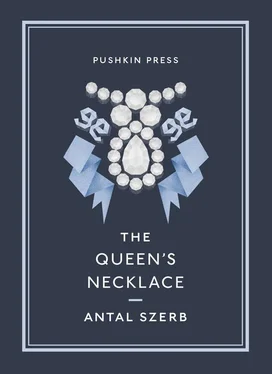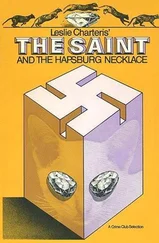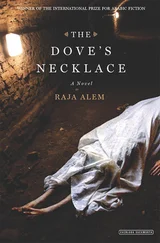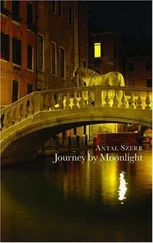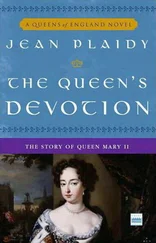And, in the background, there lurked even loftier enemies: the two royal princes, counting on the demise of Louis XVI to bring one of them to the throne. One was the Comte de Provence, that witty and cunning free spirit; the other was the Duc d’Orléans, Philippe-Égalité, who flirted with revolution, and who, as the elder son, was waiting for the throne to become vacant. There is something rather eerie about the fact that at the time of our story there were three people living at Versailles who would attain the French crown through the beheading of Louis XVI: the Comte de Provence, later Louis XVIII; the Comte d’Artois, as Charles X and the twelve-year-old Duc de Chartres, the son of Philippe-Égalité, who became Louis-Philippe, the Citizen King. And there was a fourth, the infant Duc de Normandie, who after his father’s death became the legitimate King of France, Louis XVII, but never ascended to the throne. His story was lost during the Revolution in circumstances of insoluble mystery. One thinks of Macbeth when the witch conjured up the ‘horrible sight’ of the line of future Kings of Scotland, not one of whom carried his own features.
Representatives of the Church also met and drew up a statement of protest, asking the King to allow Rohan to be tried under their jurisdiction, as the Parlement was not an appropriate body to arraign a prince of the Church. Even the Pope protested, though when he understood the more intimate details of the case he backed off. People sang this satirical song:
Mais le Pape, moins honnête
Pourrait dire a ce nigaud:
Prince, à qui n’a point de tête,
Il ne faut point de chapeau!
A man with no head has no need of a Cardinal’s hat!
But at the same time the rabble ‘knew’ that Marie-Antoinette certainly had the necklace and was simply denying the fact.
Mme Cagliostro, whose complete innocence became clear in the course of the trial, was duly freed. She was the first of Rohan’s entourage to leave the Bastille. It now became apparent for the first time just how far popular feeling had shifted towards Rohan and away from the Queen. Mme Cagliostro was enthusiastically fêted, was received in the highest places, and three hundred people signed the visitors’ book at her home on a single day.
Another sympathetic female prisoner in the Bastille also had a happy result: the comely Nicole d’Oliva gave birth to a healthy boy, who was christened Jean-Baptiste Toussaint, his natural father Toussaint de Beausire having had no hesitation in acknowledging him.
At last the Procureur Général , Joly de Fleury, completed his indictment. He read it out on 30th May. It invited the jury to agree that the documents signed ‘Marie-Antoinette de France ’ were fraudulent; that the Comte de la Motte in absentia and Réteaux de Villette should be sentenced to the galleys for life; that the Comtesse de la Motte should be birched, branded with a hot iron and imprisoned for life in the Salpêtrière. Rohan was to be given eight days to confess before the Grand chambre that he had recklessly given credence to the meeting in the Venus Bower, and that he had contributed to the deception of the jewellers; and should therefore express his full repentance, and ask pardon of the King and Queen; in addition he should resign all his official positions, give alms to the poor, and keep away from the royal residence for the rest of his life.
De Fleury’s indictment acquitted the Cardinal of fraud, but found him guilty on the higher charge that he had insulted the Queen’s honour by the assumptions he had made. Considered objectively, this was entirely justified, and the punishment proposed not especially severe.
But those who were determined both to humiliate the Queen in every possible way and to undermine the King, did not think so. When Joly de Fleury had finished reading out his statement, M Séguier, the Avocat Général , who stood above Fleury in rank, rose to speak. He protested vehemently, demanding that the Cardinal be acquitted on all counts. His raised tones were hardly in keeping with the dignity of the occasion; it was like a foretaste of the embittered rantings soon to be heard in the courts of the Revolution.
“You, who already have one foot in the grave,” he roared, “want to heap the ashes of shame upon this man, and to bring that shame upon the Parlement itself.”
“Your anger, sir, is not surprising,” replied Fleury. “People like you, who are so deeply sunk in debauchery, have no choice but to take the Cardinal’s side.”
“It’s is true that I know a few ‘girls’,” retorted Séguier, “and in fact my coach does sometimes wait at their door. But that’s entirely my business. No one could say of me that I basely sold my opinions to those in power.”
His meaning was that Fleury was in the pay of the Court. The accusation shocked him so much that he couldn’t speak.
Such were the circumstances in which the hearing began. Réteaux did not deny that he had written the letters in question, but, he pleaded, he had done so with good intentions, since he and everyone knew that the Queen would never have signed herself ‘Marie-Antoinette de France ’.
Jeanne responded to the judges’ questions with indomitable courage. Rohan and the Queen had certainly corresponded: she had personally seen some two hundred letters written between them. In hers, the Queen used the intimate ‘ tu ’ form with him, and most of them involved arranging rendez-vous. And they really had met.
This assertion deeply offended the judges, even those who were passionately against the Queen. They were aristocrats, and they felt that enough was enough. Jeanne curtseyed with a saucy, mocking smile, and left the room.
The Cardinal was next. He was very pale, utterly exhausted: a broken man. Observing that he could barely stand, the court gave him permission to sit, not on the bench for the accused but on a seat reserved for their own use. When his submission was over and he was about to leave, they gave him a standing ovation.
Next should have been the turn of Nicole d’Oliva, but she had asked to be excused for a short while as she was suckling her child. The judges were men of sensibility, and readily gave her permission. Finally she did appear, and won everyone’s hearts. Her winsome innocence and charming disarray put them in mind of a popular painting by Greuze, The Broken Jug . Some had tears in their eyes. They did not trouble her for very long; everyone took her innocence for granted. Decidedly she was their favourite.
Then Cagliostro stepped up. He too was an instant success. Even the way he wore his hair, with locks dangling in little plaits down to his shoulders, gave them something to smile at. To the standard opening question about who he was and where he was from, he replied in his most metallic tones:
“I am a noble traveller.”
That put an end to any solemnity in the proceedings. There were no further questions, as he held forth about himself, happy in the knowledge that at last he had an audience. The sophisticated, acerbic judges found him a breath of fresh air, a kind of southern bumpkin, an especially amusing market-hall barker, or an organ-grinder with his monkey. At the end they even congratulated him, which Cagliostro naturally took as his due.
When the prisoners left the Palais that evening to return to the Bastille by coach, a huge crowd was waiting to cheer Rohan and Cagliostro. The Cardinal was less than comfortable with this reception, but Cagliostro was in his element, gesticulating, shouting and throwing his hat into the throng, where (he claimed) people fought for it in their thousands.
On 31st May, at six in the morning, the Parlement sat in judgment. Despite the early hour, there for all to behold stood those late sleepers and late risers, the assembled aristocracy of France. Since five am nineteen members of the Rohan family and the related house of Lotharingia (Lorraine), including Mme de Marsan, Mme de Brionne, the Duc Ferdinand de Rohan (the Archbishop of Cambrai), the Duc de Montbazon and others, had been standing at the gate of the Grand’chambre in full mourning garb. It was like that scene in the Spanish Romanzero when the sons of Count Lara process before the King after their father’s honour has been impugned. Everything about the scene was charged with a sense of ancient aristocratic feudal — and Spanish — grandeur. Mme de Brionne, the most formidable of the fairy godmothers, had already called on the leader of the Parlement at dawn and upbraided him furiously, as only these formidable old ladies can, hurling it in his face that he had sold himself to the Court. (“How proud people are of their own independence when they betray that of others for money!”) When the judges filed past, the nineteen Rohans and Lorraines met them with a profound and sombre silence. The judges, even those who were of noble birth, were all from families far younger than the two Illustrious Houses, and were deeply moved.
Читать дальше
